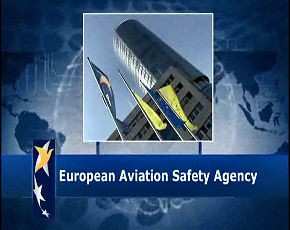Comments Stress That The Requirement Is Repetitive, Impacts GA
The European Aviation Safety Agency has issued a proposed airworthiness directive (PAD) cancellation notice (CN) to cancel EASA AD 2006-0265, dated Aug. 30, 2006, for Mode C and Mode S transponders, and all types and models utilizing Gilham code altitude input.

During the 1990s, the FAA received reports of 11 incidents involving certain transport category airplanes equipped with Mode C transponder(s) with single Gilham code altitude input. These reports indicated that, during level flight, the TCAS II issued false advisories, which directed the flight crew to either climb or descend. Further investigation showed these events were caused by incorrect Gilham coded altitude input. The instances reported in the U.S. all involved communication between airplanes with the TCAS II and airplanes having the Mode C transponder(s). Airplanes having Mode C transponders installed are predominantly older, out-of-production transport category (JAR/FAR/CS 25) airplanes.
Prompted by the original FAA AD 99-23-22 and some similar reported occurrences in the United Kingdom, the CAA UK issued AD 002-12-99 (later revised twice), which was made applicable to a much wider range of aircraft (i.e. not restricted to aircraft with TCAS installed and also applicable to aircraft fitted with Mode S transponders, if using Gilham code altitude input).
In 2006, EASA adopted the CAA UK requirements as EASA AD 2006-0265 to require the identification of incorrect transmission of altitude data from transponders that utilize Gilham coded altitude encoders as a sensor input and, where aircraft transponders accept dual Gilham coded altitude encoders, the transponder altitude data comparator must be checked for correct operation. The AD had been published as PAD 06-170 for consultation on Aug. 7, 2006, with a comment period until Aug. 21, 2006, and no comments were received during the consultation period.

In proposing the cancelling of this airworthiness directive, EASA argued that since the AD was issued, many comments have been received on the impact of the repetitive requirements, particularly on general aviation (JAR/FAR/CS 23) airplanes. These comments and other findings confirm the conclusion of the FAA that the repetitive tests of these transponders are no longer necessary to ensure safe operation. The test interval of 24 months does not guarantee proper transponder operation during the next 24 months, and any discrepancy will likely be detected by air traffic control and reported to the operator.
The Aircraft Electronics Association has received a number of inquiries from the membership on this topic. It is important for the membership to be aware of this proposed cancellation and, when possible, provide EASA with substantiating data to either support its proposal or reject it. There is some anecdotal information that a 20 percent failure rate with this AD is not uncommon.
The AEA encourages its members to email the address contained in the proposal stating whether you are in favor or against the PAD, and please address the following questions:
What is the percentage of errors/failures on aircraft where this test has been carried out?
In the above percentage, what are the most common errors or failures (bad encoder, bad wiring, adjustments, etc.)?
This PAD-CN will be closed for consultation on Oct. 31, 2012.
 ANN's Daily Aero-Term (05.05.24): Omnidirectional Approach Lighting System
ANN's Daily Aero-Term (05.05.24): Omnidirectional Approach Lighting System Aero-News: Quote of the Day (05.05.24)
Aero-News: Quote of the Day (05.05.24) Airborne 05.06.24: Gone West-Dick Rutan, ICON BK Update, SpaceX EVA Suit
Airborne 05.06.24: Gone West-Dick Rutan, ICON BK Update, SpaceX EVA Suit Airborne 05.03.24: Advanced Powerplant Solutions, PRA Runway Woes, Drone Racing
Airborne 05.03.24: Advanced Powerplant Solutions, PRA Runway Woes, Drone Racing Aero-News: Quote of the Day (05.06xx.24)
Aero-News: Quote of the Day (05.06xx.24)




